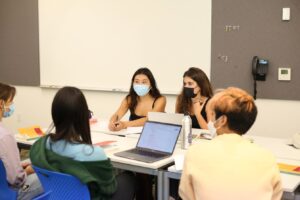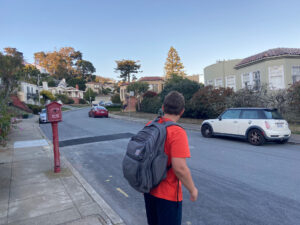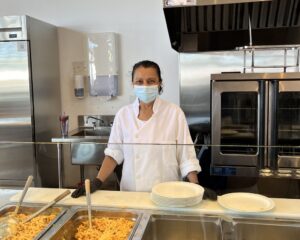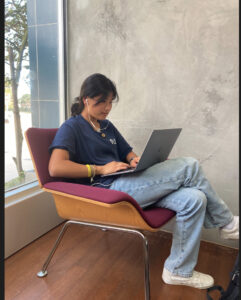While we no longer give death glares to mask-less people in the supermarket, are able to attend school and work at a fairly normal capacity and can travel once again, the longer-term effects of the pandemic are certainly still present. After spending a large portion of their developmental years inside, eyes glued to screens, children especially continue to suffer from social setbacks caused by the pandemic.
Over the past few years, different families had different policies for their children regarding seeing friends, eating out, participating in sports and other extracurriculars and about recreational “screen-time.” In the Bay Area, for the most part, kids were cooped up for a long period of time. Even if their parents were more lenient or created a “pod” with another family to ease pandemic-induced stress and depression, kids missed formative experiences. Some examples of such included school, making friends and gaining independence.
To some extent, we all needed that break from our busy lives to take a step back, gain some perspective and learn about ourselves. However, what about kids who are now in third or fourth grade, but are still struggling with basic social interactions and making friends? What about the freshmen and sophomores who are being thrown into higher-pressure environments at high schools without having experience with true academic rigor during their online middle school classes? What about high school juniors and seniors who are experiencing finals weeks, standardized testing and high-intensity study periods for the first time, just as their grades matter the most for college?

photo courtesy of Vidgami
The most difficult aspect of helping young people recover from these kinds of setbacks is that they were not all set back in the same way. For example, private schools both had the resources to redesign curricula to fit an online workspace as well as opening campuses back up sooner, compared to many San Francisco Unified School District (SFUSD) schools that remained closed for a longer period of time while also having less organized online classes. Additionally, Some parents did not necessarily force their children to actually get their schoolwork done over Zoom; some did and even pushed their kids to do better than they were before.
An article presented in the San Francisco Chronicle by Jill Tucker and Nami Sumida is headlined “Nearly 90% of kids at one S.F. school were chronically absent last year. What is SFUSD doing about it?” A study presented in this article illustrates the issue of chronic absenteeism, which is defined as the percentage of children who missed over 10% of the days in the school year. All 15 schools surveyed saw an increase of 30-50 percentage points in this category compared to pre-pandemic numbers. Regardless of the quality or quantity of the SFUSD pandemic curriculum, the students who were not even present in class were set back significantly more.
From the perspective of mental health, some kids spiraled into a pit of depression, unable to do their schoolwork or virtually keep in touch with friends even if they wanted to. Some families simply did not have constant, reliable internet, or the means to purchase electronic devices for their children.
Reasonably, everyone had different experiences, making it that much harder to catch everyone up. This is especially true since schools and other childcare organizations are still recovering from economic strains they may have faced throughout the pandemic.
The pandemic’s effect on children is much more noticeable and significant for younger children. Kids who are currently in middle school had a couple years of classroom instruction and real life experiences before COVID struck, making the gap in their knowledge more related to course-content as opposed to social skills.
Amalia Freedman is the mother of a fourth grader, Marco, at SFUSD’s Commodore Sloat Elementary School. The pandemic has definitely had long term impacts on her child, but not ones that he won’t eventually get over. She explained that the impacts of the pandemic on kids are definitely highly dependent on the school that they attended.
SFUSD only offered an hour and a half of virtual instruction per day during the heart of shelter in place, which made it difficult to keep Marco consistently engaged and socialized. Luckily, Marco’s second grade teacher offered some extra optional Zoom time that Freedman had Marco attend every day, but this was not an option for all students. His experience was much different than that of children who had the privilege of attending schools with more resources to intensify online school as well as truly enforcing attendance and engagement.
A moment that Freedman described when the effects of the pandemic felt the most tangible occurred while she was crossing the street with Marco. Freedman asked Marco if he knew why he should look both ways when crossing the street even when she was there with him. “I explained, ‘it’s so that when you walk by yourself you know how to cross the street safely. And he looked up at me, and said, ‘what, when I’m 15?’ That’s when I realized that the pandemic was having a huge impact on his independence,” she said.

Photo by Nina Laser
Freedman has an older child, Miriam, who was already walking with her neighborhood friends to local stores without supervision when she was Marco’s age. Marco has had so many of those formative experiences taken away from him, leading to a lack of independence.
However, Freedman is fully confident in her son’s ability to recover from this. “Kids are resilient. They will bounce back,” she said.
Lizzie McCaffrey is the program coordinator for Legarza Sports, an organization that provides childcare and other programming for youth in the Bay Area, in addition to locations in other states. She runs after school programs, PE classes and summer camps, working with kids of all ages. She is also attending graduate school and is on track to become a school counselor. According to her, one of the biggest changes she noticed among kids who attended her summer camps post-pandemic is self-awareness.

photo courtesy of Legarza Sports
“For example, I used to go on field trips to different areas of San Francisco and would confidently do that with thirty kids. This summer, I felt like it was harder to get the kids’ attention and have them follow directions in the same way, especially with safety measures,” McCaffrey said. She described how many kids did not respect boundaries and would blatantly break rules about when they could go outside, or other similar situations.
As an explanation for this, McCaffrey suggested that children don’t take figures of authority as seriously as a result of spending too much time in their parents or caring guardians.
The overuse of technology that began as a result of our collective reliance on devices during the pandemic is also still an issue. Kids are more and more dependent on phones, iPads and laptops for entertainment, as well as on social media for communication.
McCaffrey thinks that technology overuse is correlated with shortened attention spans, which was a similar issue she noticed this past summer.
She believes that in addition to regulating the amount of screen time kids have, monitoring content is important as well. “I know of a first grader at a school that I teach at right now, and he is super violent — he talks about blood and death a lot. We have talked to his parents about this and his exposure to the media, and they seem to have not very strict policies and are ‘hands-off,’” McCaffrey said.
A study from Maryville University described technology and social media as a “double edged sword” during the pandemic. While it allowed schools and extracurricular activities to continue to run their programs and people to stay in touch, it also exposed young kids to heightened amounts of explicit and damaging content, whether the content was designed to be that way or not.
Jennifer Baumer is a middle school teacher at the Brandeis School of San Francisco. She described how while the current eighth grade class acts very similarly to those in the past, and students engage well with their peers, some different issues are more prevalent for kids who experienced the heart of the pandemic during the latter end of elementary school.
Baumer noted an unparalleled dependency on their phones among her students, as well as the way parents have come to accept this dependency.
Brandeis’ eighth grade class has a tradition of going to Israel every year, and they were finally able to reinstate this tradition for last year’s graduating class. The trip has historically been technology-free for the students. However, there was still a very real concern that students might get COVID while traveling.
Prior to the trip, parents expressed lots of concern that their children might not have their phone if they were to get COVID, and they were worried about boredom. Baumer was surprised that the main concern for parents was what their kids would do during a quarantine time as opposed to the potential physical illness.
“The phone has almost become like a security blanket,” Baumer said. She explained how policies during the normal school day have evolved and loosened due to the pandemic. Teachers used to strictly enforce the no-phone-in-class rule much more than they do now.
Baumer has also noticed an influx in mental health issues among her students, whether it be depression, self harm or eating disorders. It is difficult to fully attribute this to the pandemic, but at least the higher number of diagnoses could be correlated in some way with spending so much time at home, alone. Overuse of social media can also cause these kinds of problems, which was definitely a possibility during the pandemic.
According to a study by the National Library of Medicine titled “Social Media Use and Its Connection to Mental Health: A Systematic Review,” there was a 70% increase among surveyed social media users who self-reported depression compared to those surveyed who were not on these social platforms. The report states that “social media promotes putting on a facade that highlights the fun and excitement but does not tell us much about where we are struggling in our daily lives at a deeper level.”
Forbes Magazine’s “Impact of Covid-19 on Children’s Social Skills” by Leah Campbell described a “mental health epidemic” that followed the physical health pandemic. Not only do these mental health issues among kids stem from media exposure, but also the intense feelings of grief that follow a period of illness and death, whether or not someone they knew personally was affected.
Overall, there is no singular common narrative of the pandemic. All we can say certainly was that it was hard to get through. The short term effects were the only ones initially talked about, but it is now time to shift the focus to longer term setbacks in socialization, mental health issues and more, especially for the youth of our generation.






